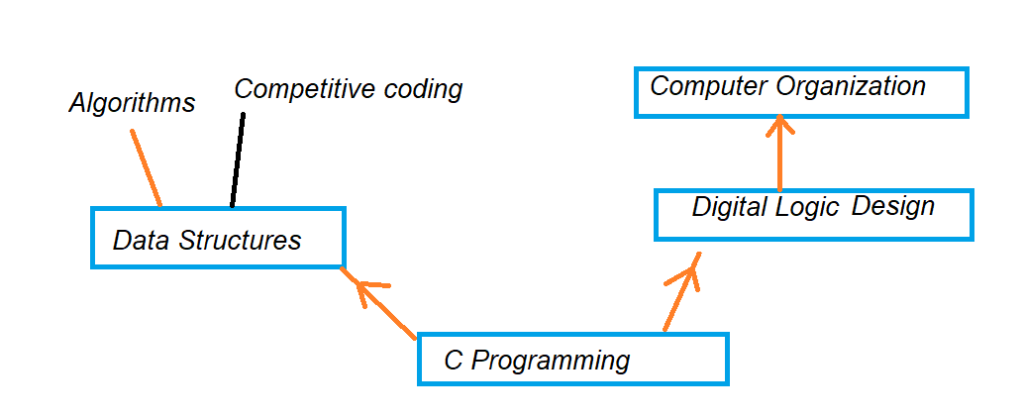Points Before Studying Computer Organization and Architecture
In this video, We discuss Points Before Studying Computer Organization and Architecture.
The reader can study the entire guidance on how to study computer science. Click Here.
A computer science student will start his career by studying C Programming.
After studying C Programming, the students start studying Data Structures to improve their coding skills.
After studying data structures, the students can move to learn, Algorithms, competitive coding, or web development in their interest.
The below diagram shows the steps to follow to improve coding skills.

More than coding is needed to understand the latest technologies like cloud computing, Data Science, Machine Learning, Artificial Intelligence, and Cyber Security.
Understanding hardware is also much needed for a computer science student.
The first subject students study to understand hardware is Digital Logic Design.
In our last video, we discussed the level of understanding students would get after completing Digital logic design.
The students can design small circuits like encoders, multiplexers, etc.
Now the students can start studying computer organization and architecture.
What’s the level of understanding students get after completing computer organization and architecture?
The below points explain the level of understanding after completing the course.
Keep these points in mind, then start studying computer organization and architecture.
Study complete computer organization and architecture course. Click Here.
1) The first session in our course deals with designing a simple processor.
The basics of Digital logic design are required to design a simple processor.
The below diagram shows the sample C Program.
After completing the first session, one will get an idea of how the C program is executing in the processor.
How are the machine-level instructions written?
To execute high-level programs.
2) The second session deals with the processor getting and setting data into the memory.

How the processor load and store the data required for the program from the cache and main memory.
We understand how memory is organized to efficiently shift the data to the processor.
3) The third session deals with how input and output devices connect with processor and memory devices.
How I/O devices exchange data from the processor and memory.
Finally, students will have complete design visualization of computer hardware.
